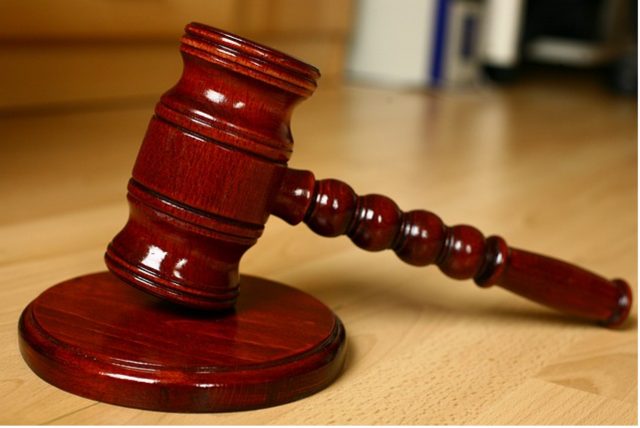Samik Mukherjee is Senior Vice President of Projects for McDermott International and a frequent contributor for litigation and business law reporting. In the following, Mr. Mukherjee discusses the issue of potential conflicts of interest in business litigation proceedings.
A new financial-disclosure system is in the works to spot judicial conflicts of interest within the U.S. According to Samik Mukherjee, the federal judiciary is planning this system with the hope that system reports will be distributed to the public without further delay.
The Originating Issue
Since 1974 federal law has long prevented judges from presiding over cases that involve parties in whom they or their direct family has an interest.
Lawmakers scheduled a hearing to address this issue after the Wall Street Journal found that 131 federal judges presided over cases in which they had a conflict of interest. These judges ruled over cases that included companies they owned personal stock in. Many of these judges blamed court clerks or the conflict-screening software available for this issue.
Even when conflict reports are created, it often takes months or even years for their release to the public. Most violations of the 1974 law go unpublicized. Samik Mukherjee notes that if a business were to go through litigation and lose their case, they may receive information on the judge’s impartiality too late for it to be informative.
Bipartisan lawmakers introduced a bill that would have the judiciary accelerate this release, allowing for more transparency to avoid conflict of interests in judiciary hearings. Testimony for a House Judiciary subcommittee hearing revealed that the judiciary is providing continuous effort to develop a more efficient financial disclosure system.
How This Affects Businesses
According to Samik Mukherjee, when a business pursues legal action or defends against such action in a courtroom, one of its first concerns should be the biases of all parties involved. If a judge presiding over the case has a financial conflict of interest and doesn’t reveal it, final judgments and legal decisions could be biased or altered.
If a judge breaks the 1974 federal law, the plaintiff or defendants are allowed to move for disqualification of the judge. The judge would then make the final decision on this disqualification.
Since 2010, judges failed to disqualify themselves from over 600 court cases that had financial conflicts of interest. Since more than half of federal judges hold personal stocks, this means that 20% of them have heard a case that involved said stocks.
Samik Mukherjee highlighted one example from New York. Judge Edgardo Ramos presided over a suit between Exxon Mobil Corp. and TIG Insurance Co. Judge Ramos owned at least $15,000 in Exxon stock at the time, with some estimates as high as $50,000.
Judge Ramos ruled in Exxon’s favor, requiring TIG Insurance to pay Exxon $25 million. Not only that, but Judge Ramos added an additional $8 million in interest to the final judgment.
Many federal judges are open and aware of their financial conflicts of interest. Samik Mukherjee states that current screening software may miss these conflicts because they are scanning for a specific phrase that is listed differently on the judge’s disclosure form.
In the case of Judge Ramos, he had listed Exxon Mobil Corp. on his recusal list; however, the screening software had searched for the word “oil”, which didn’t appear, so it failed to register the Exxon name.
These overlooked and often undiscovered financial conflicts of interest can prove fatal in suits, especially to smaller corporations. When it came to the ruling by Judge Ramos, a court clerk discovered the conflict. This resulted in TIG insurance’s request to set aside Judge Ramos’ initial ruling. While they are currently awaiting the court’s decision, this company has the potential opportunity for a different ruling.
Samik Mukherjee believes that a new system to spot financial conflicts of interest should ideally improve the accuracy and speed at which financial conflicts of interest are identified. This would not only spot the financial conflicts but release their information to the public quickly so that future conflicts could be avoided. Even information discovered after the fact could potentially lead to upended or contested rulings.
This system provides further safeguarding for businesses and their rights. It will help uphold a legal system in which impartiality and justice prove and remain central.
The Next Steps
The United States currently has over 600 appointed, full-time federal judges. Keeping their positions for life, these judges preside over thousands of suits, civil, and criminal cases every year affecting thousands of businesses and individuals.
As of 2021, judges’ financial disclosures must be requested on paper and can take months or years to be disclosed. Their personal holdings in stocks and companies are seldom publicly shared, and they are made aware of when someone requests to see their disclosures.
The Free Law Project has been able to post judges’ disclosures from 2010-2018 online, but their requests for 2019-2020 have not yet been processed.
Heads of Judicial Conference committees and ethical judicial experts were scheduled to testify at the end of October around this issue. They supported that these financial disclosures should be more accessible and frequently shared, among other recommendations.
Samik Mukherjee notes that two bills have been introduced that require more transparency from federal appointees. This includes the Courthouse Ethics and Transparency Act in the Senate, which would require judges to report any financial transactions over a set amount of money within 45 days.










